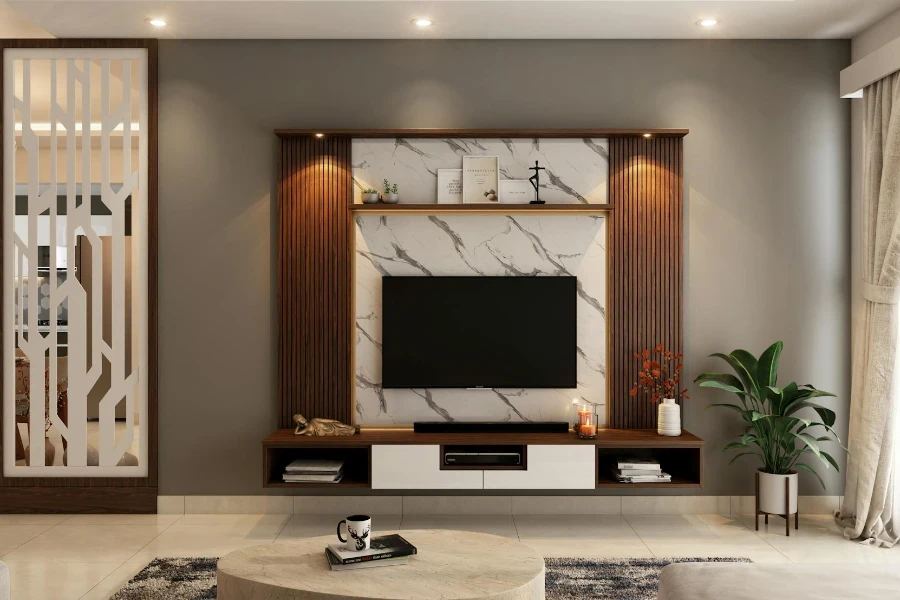In the vast expanse of consumer electronics, TVs hold a special place in our homes and hearts. They are not just devices but windows to the world, offering endless entertainment, news, and educational content. However, the journey to picking the right TV can be daunting, given the plethora of options available. This guide aims to simplify that journey, breaking down the key factors to consider, ensuring you make an informed decision tailored to your needs.
Table of Contents:
– Understanding screen types and resolutions
– The importance of connectivity options
– Deciphering smart TV features
– Considering size and placement
– Energy efficiency and environmental impact
Understanding screen types and resolutions

When embarking on the quest for a new TV, the first pitstop is often the variety of screen types and their resolutions. From LED to OLED and QLED, each technology offers unique advantages, such as color accuracy, contrast levels, and energy consumption. Understanding these differences is crucial in determining which screen will best suit your viewing preferences.
Resolution is another critical aspect, with options ranging from Full HD to 4K and even 8K. Higher resolutions offer more detailed and crisper images, especially noticeable on larger screens. However, the content available in high resolution is also a factor to consider, as it can affect your overall viewing experience.
The choice between screen types and resolutions ultimately depends on personal preference and the type of content you consume most. Whether you’re a sports enthusiast, a movie buff, or a gaming aficionado, there’s a screen type and resolution that aligns with your needs.
The importance of connectivity options

In today’s interconnected world, a TV’s connectivity options are as important as its picture quality. HDMI ports, USB inputs, and wireless connectivity such as Wi-Fi and Bluetooth have become standard features, enabling users to connect a wide range of devices, from soundbars and gaming consoles to smartphones and tablets.
The number of ports and the inclusion of the latest standards, like HDMI 2.1, can significantly enhance your entertainment system’s flexibility and future-proof your investment. Additionally, wireless connectivity opens up a realm of possibilities, including streaming content from your devices directly to your TV and using your smartphone as a remote control.
Understanding and prioritizing the connectivity options that align with your current and future needs can greatly influence your satisfaction with your TV choice, ensuring it serves as a versatile hub for all your entertainment sources.
Deciphering smart TV features

Smart TVs have transformed the television landscape, offering built-in internet connectivity and support for a plethora of streaming services and apps. Navigating through the smart features available can be overwhelming, but focusing on the operating system, app availability, and user interface can provide clarity.
The operating system determines the layout, speed, and ease of use of your TV’s smart features, affecting how quickly you can access your favorite content. App availability is equally important, as it dictates the range of streaming services and applications you can install, from video on demand to social media apps.
Moreover, some smart TVs come with voice control and integration with smart home devices, enhancing convenience and creating a more connected home environment. Considering how these features align with your lifestyle and entertainment consumption habits is key to unlocking a richer, more integrated viewing experience.
Considering size and placement

The size of your TV and its placement in your home are pivotal factors that influence your viewing experience. A common misconception is that bigger is always better, but the ideal TV size should be based on the distance from which you’ll be watching. A general rule of thumb is that the viewing distance (in inches) should be approximately 1.5 to 2.5 times the diagonal size of the TV screen.
Placement is another crucial consideration, with factors such as room layout, lighting, and seating arrangements coming into play. Wall mounting can save space and offer a sleek look, but ensuring the TV is at eye level and in a position that minimizes glare is essential for optimal viewing comfort.
Balancing size and placement with the aesthetics and functionality of your living space will enhance your enjoyment and ensure your new TV complements your home environment.
Energy efficiency and environmental impact

In an era where environmental consciousness is more important than ever, considering a TV’s energy efficiency and its environmental impact is a responsible step. Energy-efficient models not only reduce electricity consumption and utility bills but also lessen the environmental footprint of your entertainment.
Looking for energy ratings and certifications can guide you in selecting a TV that aligns with your environmental values. Additionally, considering the manufacturer’s commitment to sustainability, from production practices to recyclable packaging, can contribute to a more eco-friendly purchase.
Choosing an energy-efficient TV is a win-win, offering cost savings over the lifespan of the product while supporting efforts to minimize environmental impact.
Conclusion
Selecting the right TV involves navigating through a maze of technologies, features, and personal preferences. By understanding the nuances of screen types, resolutions, connectivity options, smart features, and considering size, placement, and energy efficiency, you can make an informed choice that enhances your viewing experience and fits seamlessly into your lifestyle. Remember, the perfect TV for you is one that meets your unique needs, offering a balance between technology, quality, and sustainability.



